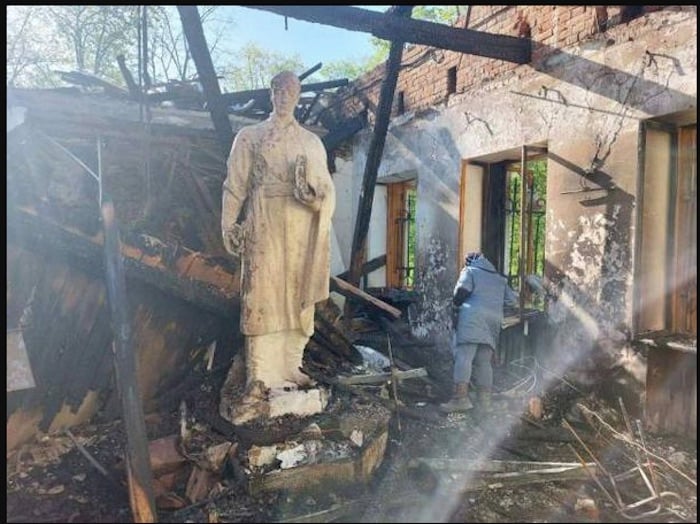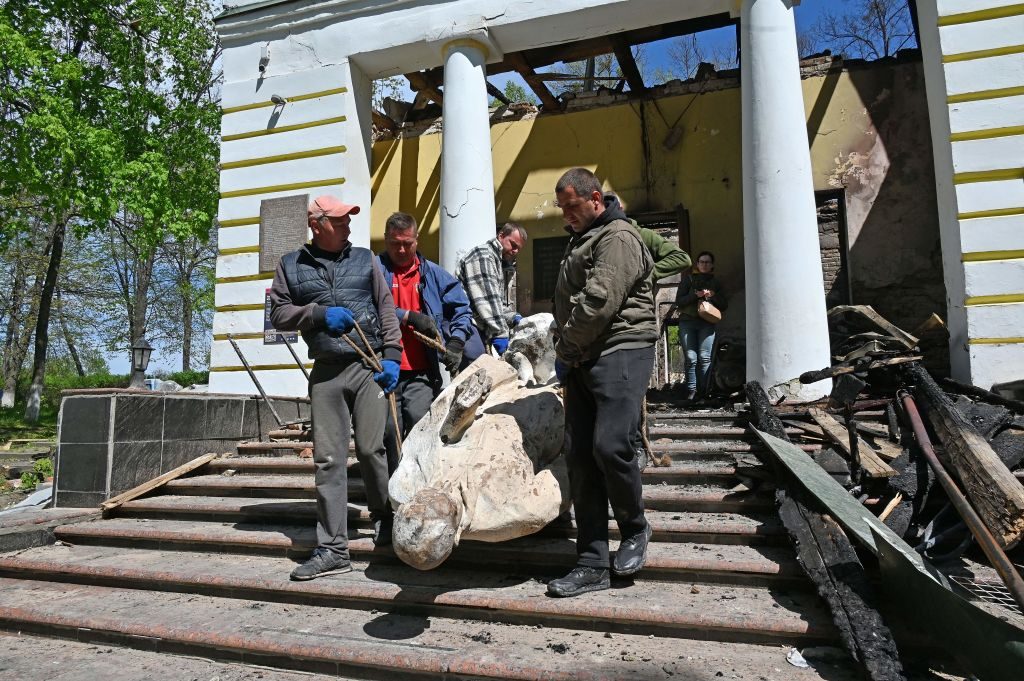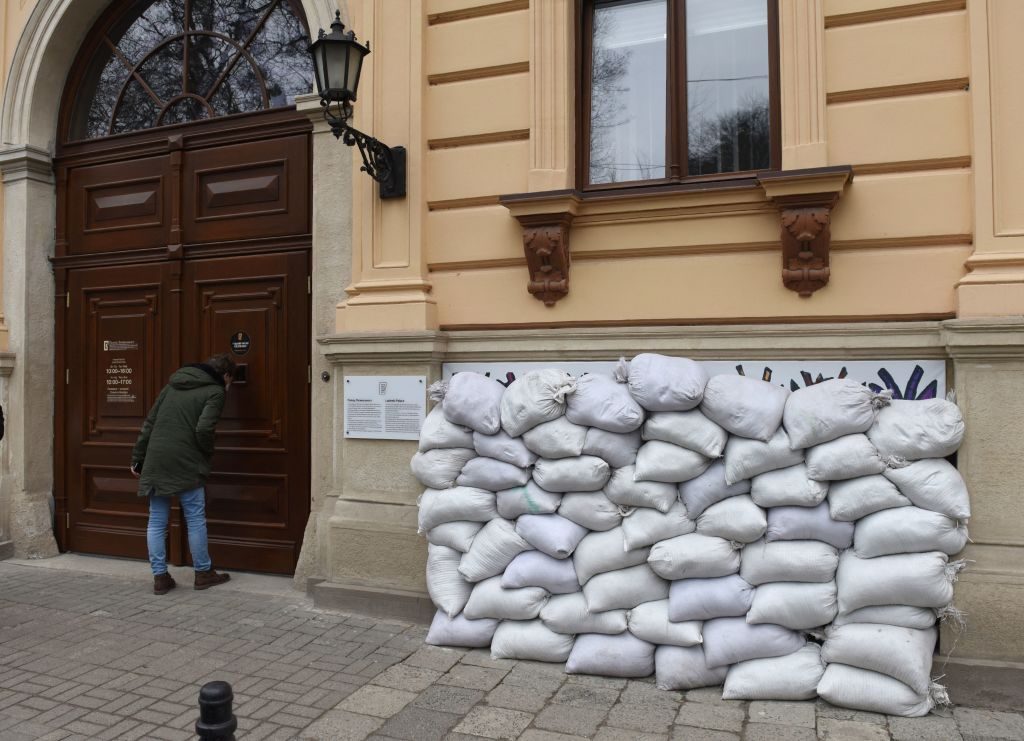Politics
The Metropolitan Museum Is Helping Train a New Class of Men to Protect Ukraine’s Cultural Heritage
The Met is collaborating with the Smithsonian to help with the army's Monuments Officer Training and Military Programs.

The Met is collaborating with the Smithsonian to help with the army's Monuments Officer Training and Military Programs.

Sarah Cascone

Four year this coming fall, the U.S. Army announced plans to partner with the Smithsonian Institution to revive its legendary Monuments Men, the international task force that sought to protect Europe’s cultural heritage during World War II, including recovering and restituting art looted by the Nazis during the conflict.
Now, the 21st-century iteration of the group is working to preserve the art and culture of Ukraine during the ongoing Russian invasion—and part of the Monuments Officer Training and Military Programs are taking place at the Metropolitan Museum of Art.
“Part of the conversation here is how to document evidence of crimes,” Smithsonian Cultural Rescue Initiative director Corine Wegener, who has led similar efforts since 2013, in Iraq, told the New York Times during a visit of the 353rd Civil Affairs Command reserve unit, stationed on Staten Island, to the institution. “We have worked hard to develop a methodology for documentation. You aren’t just looking for broken objects but evidence of how they were broken.”
With help from the museum and the Smithsonian, soldiers from the army are also learning about strategic importance of art in the conflict. Putin claims that Ukraine does not have its own cultural heritage independent of Russia, so his efforts to destroy Ukrainian culture aim to erase the nation’s identity.

Museum workers carry the sculpture of Ukrainian philosopher Hryhorri Skovoroda from the destroyed building of the Hryhoriy Skovoroda National Literary Memorial Museum in the village of Skovorodynivka, in Kharkiv Region, on May 7, 2022. Photo by Sergey Bobok/AFP via Getty Images.
Even the way that we identify cultural artifacts can be a fraught subject, as the Met learned when it reclassified painters Ivan Aivazovsky, Arkhyp Kuindzhi, and Ilya Repinby from Russian to Ukrainian to more accurately reflect their background. It’s a move that has proved controversial in some quarters, prompting the museum to hire additional security.
The idea for the new Monuments Men is that deploying military officers with a background in the art and culture of a nation will help them save works during times of war—and to accurately access and document damage that has already taken place while implementing war-zone conservation techniques.
In a conflict zone, the culprit might be a bombing, but it could also be the result of vandalism and looting, or even a natural disaster. To prepare soldiers for what they might encounter in the field, the Army has staged simulations at the National Museum of the United States Army, in Fort Belvoir, Virginia, and organized a trip to Copán, a Maya ruin in Honduras. (The first class of 21 Army Monuments Officers graduated last August.)
Concerns about Ukrainian cultural heritage have been paramount since the beginning of the invasion in February 2022.

A man stands looks through a door of the Lviv National Art Gallery with windows protected by sandbags in the western Ukrainian city of Lviv on March 7, 2022, 12 days after Russia launched a military invasion on Ukraine. Photo by Yuriy Dyachyshyn/AFP via Getty Images.
“The United States is committed to helping the people of Ukraine protect and preserve their historically important sites. Ukraine’s cultural heritage is irreplaceable, and its damage or destruction would be a profound loss to the entire world. We are closely monitoring the situation and will call out Russia’s acts of destruction,” Lee Satterfield, the assistant secretary of state for educational and cultural affairs, said in a statement shortly after the outbreak of war, in the wake of the destruction of a museum dedicated to Ukrainian folk artist Maria Prymachenko.
In the first year of the invasion, there was evidence of some 1,600 instances of damage to Ukrainian cultural heritage sites, including more than 500 religious sites and 200 museums, archives, and libraries, according to Smithsonian magazine. Among the most high-profile incidents were a Russian airstrike that hit Mariupol’s Drama Theater, which was being used a shelter for civilians.
In February 2023, the U.S. Department of State’s Bureau of Educational and Cultural Affairs pledged to spend $7 million on its Ukraine Cultural Heritage Response Initiative, dedicated to aiding Ukraine’s efforts to defend its cultural heritage. But the threat remains a serious one, with recent reports from ARTnews that the catastrophic collapse of the Kakhova dam flooded the house museum of self-taught Ukrainian artist Polina Rayko.